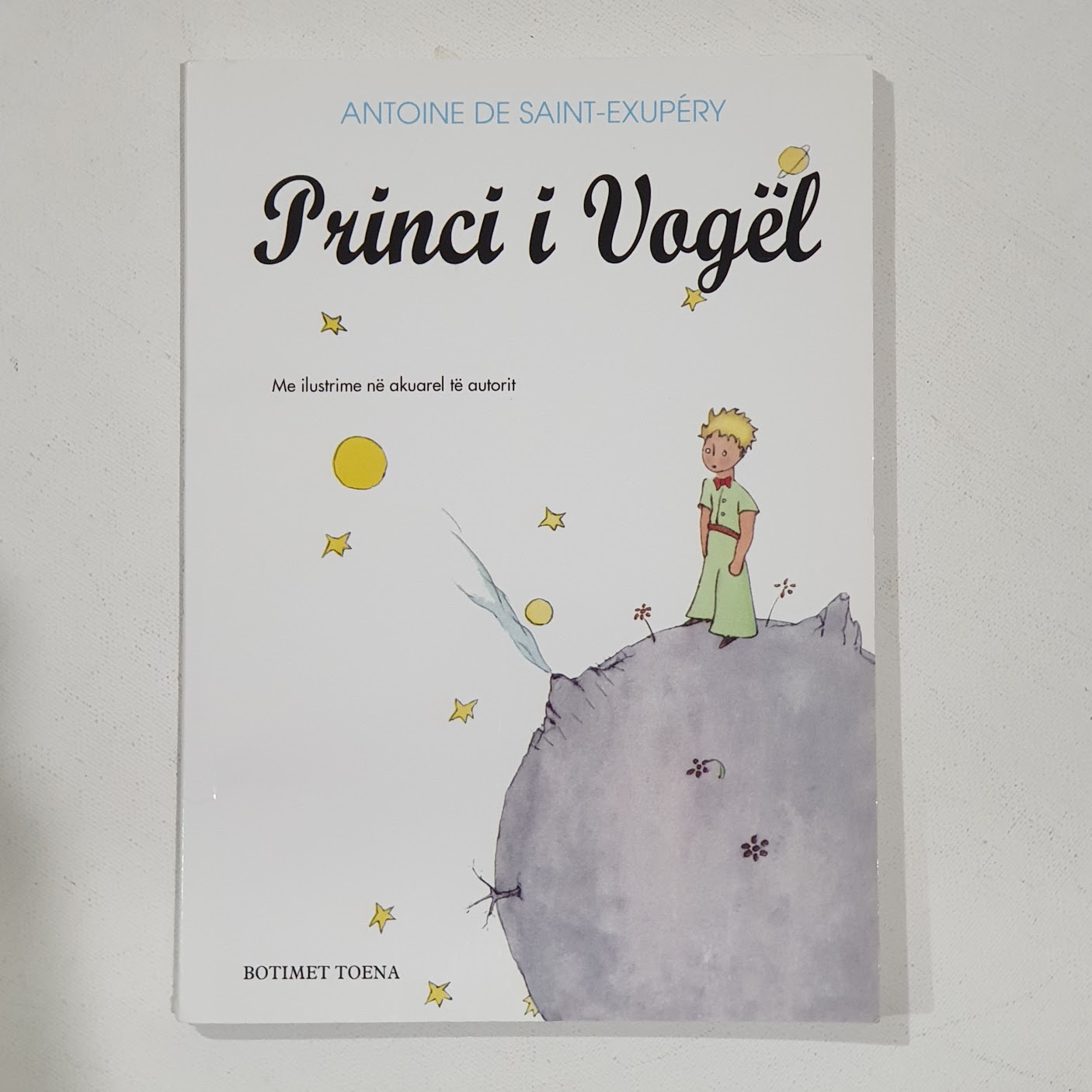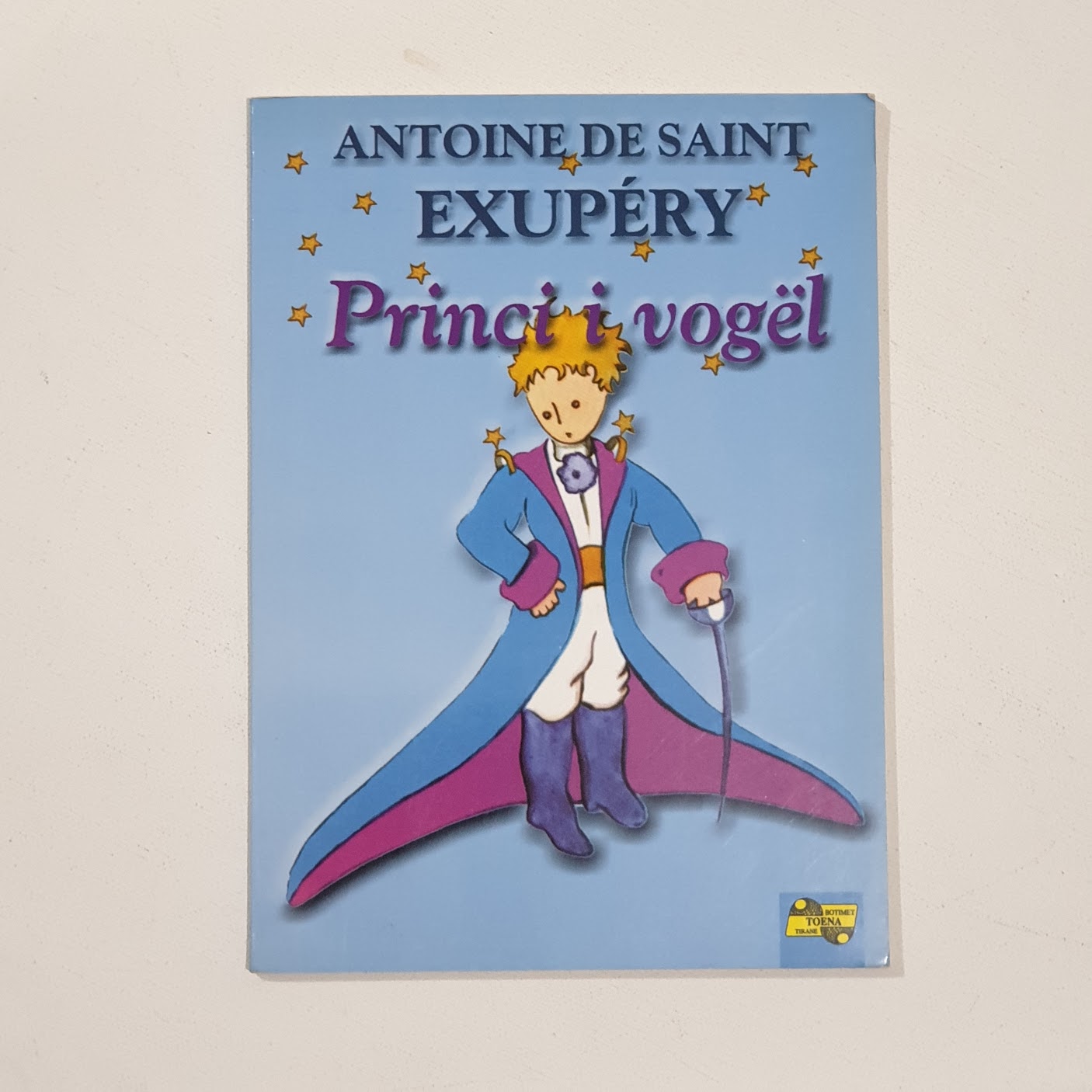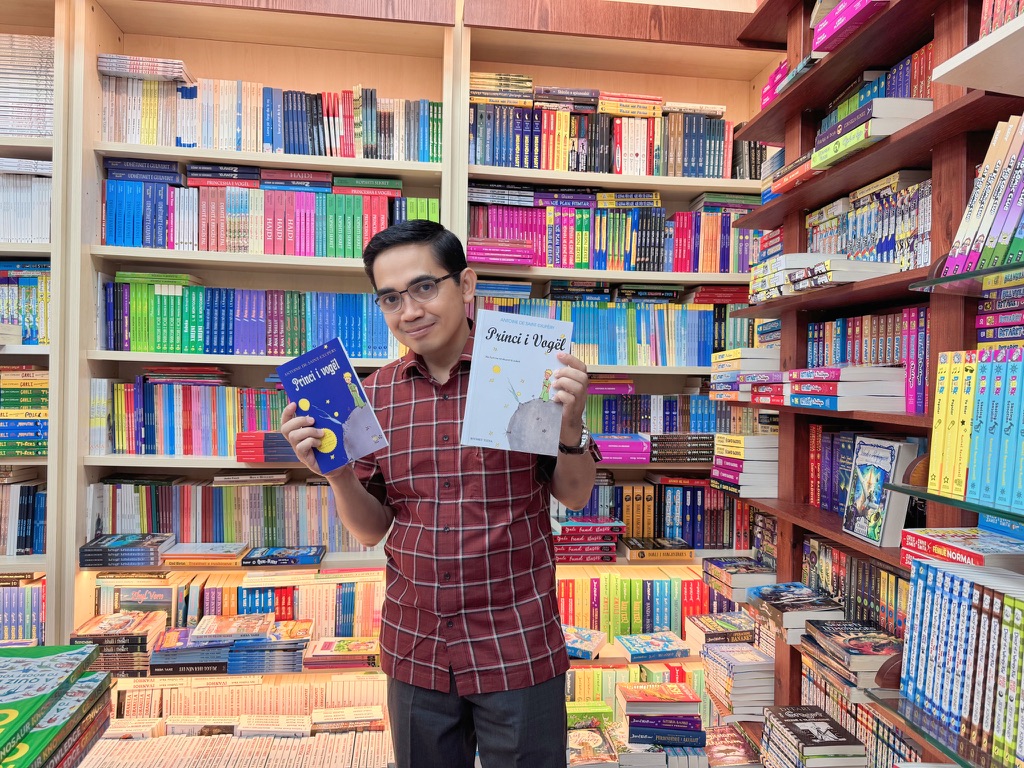
Princi i Vogël — in Albanian language.
Albanian, or also called shqip, gjuha shqipe, or arbërisht is an Indo-European language spoken primarily in Albania and Kosovo, with significant communities in North Macedonia, Montenegro, and Serbia. It stands out within the Indo-European language family for its unique features and lack of close relatives, making it a distinct branch of the language family.
The origins of the Albanian language are somewhat obscure, partly because the region’s early history is not well-documented. The language is thought to have descended from Illyrian and possibly Thracian languages, ancient tongues spoken in the Balkans before the Roman Empire’s expansion. The first documented evidence of the Albanian language dates back to the 15th century, with the oldest known text being the Gjon Buzuku’s Missal, written in 1555
Albanian is divided into two major dialect groups, which also reflect geographical divisions:
- Gheg (Geg) — spoken in the north of Albania, as well as Kosovo, parts of Montenegro, and North Macedonia. Gheg dialects exhibit more archaic features and greater diversity.
- Tosk — spoken in southern Albania and also serving as the basis for Standard Albanian, established in the 20th century to unify the Albanian-speaking population. The choice of Tosk as the standard was politically motivated, part of broader efforts to foster national unity.

Albanian has a rich vowel system and maintains a series of nasal vowels in some Gheg dialects, a feature that has disappeared in Tosk and Standard Albanian. Its consonant system includes palatal and labio-velar sounds, which contribute to its distinctive sound among Indo-European languages. Albanian grammar features three genders (masculine, feminine, neuter), though the neuter is limited and increasingly merging with the masculine. It has a complex system of noun declensions and verb conjugations, with mood, tense, aspect, and voice distinctions.
The Albanian vocabulary is a mix of inherited Indo-European elements, borrowings from Latin, Greek, Slavic languages, Turkish (due to the Ottoman rule), and more recently, Italian and English. This reflects the diverse historical influences on the region.
The modern Albanian alphabet is based on the Latin script and consists of 36 letters, including some with diacritics to represent specific Albanian sounds.



